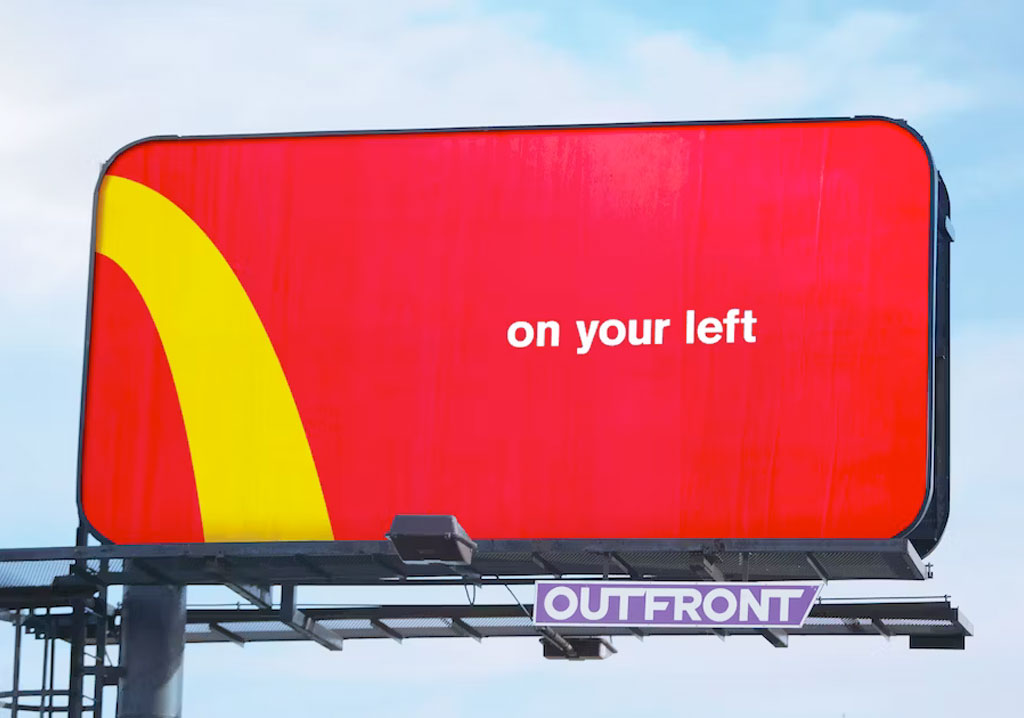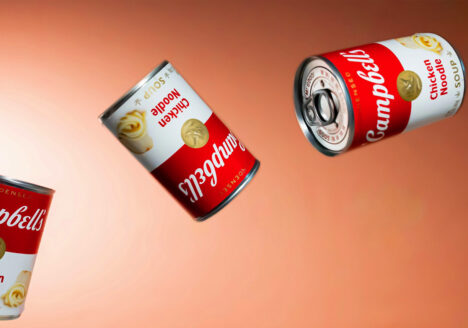Are you using Canva? Then you might be killing your brand.
(Pictured above: No logo. No name. Still unmistakable. When your brand is this consistent, a colour and a curve are enough.)
There is a design disease quietly spreading through the business world. It is shiny, fast, and easy to catch.
It is called Canva-branding, and it is destroying the discipline that makes brands strong.
The rise of the copy-paste aesthetic and the illusion of creativity
Canva began as a tool to democratise design, and in theory, that was a good thing. But in practice, it has created a tidal wave of visual sameness.
Scroll through Instagram today and you will see it: the same pastel gradients, serif headlines, and minimalist icons repeated across industries. A café looks like a skincare startup. A law firm looks like a wellness coach. The visual language of every brand is blurring into one endless scroll of beige templates and borrowed trends.
Everyone is designing, but few are actually building brands.
This visual homogenisation is not just an aesthetic issue. It is a psychological one. Research by the Ehrenberg-Bass Institute shows that brand distinctiveness plays a direct role in consumer memory and decision-making. When brands start to look the same, they become harder to remember, less trusted, and less likely to stand out. Familiarity drives choice, but sameness kills distinction.
Canva also sells the illusion of creativity. It gives you endless templates, endless fonts, endless layouts, a dopamine hit of choice. But real creativity does not come from having endless options, it comes from using limited ones well. Professional designers understand that creativity thrives inside a framework. A strong brand system provides that framework: a defined colour palette, a type hierarchy, tone of voice, imagery direction and rules for composition. When used correctly, these restrictions create a distinct language that can adapt and evolve without losing its identity.
Consistency is not a limitation, it’s a competitive advantage
Even when there are branding guidelines established, Canva users get bored, so they start mixing it up: new fonts, new colours, new layouts, new vibes. But branding is not about bringing novelty and mixing things up. It is about maintaining clarity for your audience. Branding is not about trends. It is about serving your audience consistently and intentionally. Real branding requires restraint. It is about creating a visual rhythm that becomes instantly recognisable. And that’s not boring, it’s powerful.
Keep this in mind: your audience is bombarded with between 6,000 and 10,000 advertising messages every single day. In that kind of noise, recognition is everything! If your brand does not show up consistently, it simply disappears. And the data is clear, a study by Lucidpress and Demand Metric found that brands with consistent presentation across all channels increase revenue by up to 33 percent. Consistency builds trust, credibility, and recall. Inconsistent branding does the opposite. It signals uncertainty, confusion, and lack of professionalism.
When every post looks different, your brand becomes forgettable. When everything looks coherent, your brand becomes recognisable. That is the discipline Canva has made too easy to skip.
The irony is that most users think they are being creative by breaking rules. In reality, they are diluting the very thing that makes a brand memorable. True creativity is not about constant change. It is about creating harmony within constraints. That is what separates design from decoration. And decoration without purpose is just noise.
Design with discipline, not just style
The answer is not to delete Canva. It is to reclaim control. Canva is a tool, not a strategy. The problem is not the platform, it is the lack of discipline in how it is used. So if you want to protect your brand, start by defining the rules. Build a clear identity system: logo spacing, colours, type hierarchy, image style, tone, and usage examples. Then, create your own templates that align with those rules. Lock them. Use them. Repeat them.
Do not reinvent your look every week. Reinforce it. Do not chase trends. Build recognition. Do not design for yourself. Design for your audience.
Your brand is not a playground, it is an ecosystem. And ecosystems survive through balance, not chaos.
The bigger picture: what this means for business
A brand’s visual discipline directly influences its bottom line. Studies show that consistent brands outperform inconsistent ones across every measurable metric: revenue, trust, loyalty, and long-term value.
McKinsey’s 2024 State of Branding report highlighted that companies with strong, consistent brand identities outperform their competitors by up to 20 percent in brand growth and are three times more likely to be perceived as “high-quality” by consumers.
Similarly, research from Marq (formerly Lucidpress) found that 60 percent of companies struggle to maintain consistency when multiple people are creating content, exactly the gap that Canva tries to fill but often makes worse.
The truth is simple: easy design tools make brand execution easier, but they also make brand erosion faster. Without strategy and boundaries, Canva can flatten distinctiveness, replacing identity with imitation.
Canva did not destroy branding on its own, people did. The tool is not the enemy. The lack of discipline is. Good branding is not about constant reinvention. It is about repetition with meaning. It is not about chasing the next template. It is about showing up, again and again, with purpose, clarity, and coherence. In a world drowning in visual noise, the brands that survive are not the ones shouting the loudest, they are the ones we instantly recognise, because they have the discipline to stay true.




